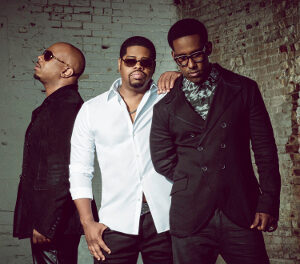As good as they are the East Carolina University Chamber Singers are not the only stars in the university’s School of Music choral programs. They deserve all the accolades they get, to be sure, but the school has other stars, or stars-on-the-rise, who merit attention and praise.
Such was the case at St. Paul’s Episcopal Church when the Chamber Singers, St. Cecilia Singers, Women’s Chorale and a quickly assembled choir of young men provided a terrific musical start to the holiday season. Dr. Daniel Bara, director of ECU choral activities, led the Chamber Singers and the men, and Dr. Jeffrey Ward, assistant director of choral activities, led the St. Cecilia Singers and Women’s Chorale.
The program contained a few familiar selections, but it also contained less well known works that proved both meaningful and musically satisfying.
The most challenging piece by far was Benjamin Britten’s Ceremony of Carols, based mainly on texts from the 14th, 15th and 16th centuries, and the Women’s Chorale gave a splendid reading of the work, with its tricky rhythms and occasionally obscure lyrics. Accompanied by harpist Vonda Darr, the young women started in an antiphonal processional that was hard to pull off, but the main body of the piece came across quite well. In fact, the voices of the approximately 70 singers blended beautifully throughout, and the unison portions, such as “Wolcum Yole,” were, indeed, sung in “one sound” with no apparent vibrato in any voice or any section. The cascading voices in “As dew in Aprille” shimmered, and the most famous piece, “This Little Babe,” raced along at near-breakneck speed without losing its drive or coherence.
Several nice solos were offered, too, by Alexandra Braham, Liz Alford and Madeline Beitel, and Darr’s harp interlude between the sixth and seventh pieces was quite lovely.
The St. Cecilia Singers, generally younger music majors, offered three Latin pieces, including Praetorius’ well known “Psallite” and works by Hassler and Palestrina, but the highlights were contemporary settings: Don Michael Dicie’s arrangement of “The Cherry Tree Carol,” Ron Jeffers’ arrangement of “Maria Walks Amid the Thorn” and Paul Manz’s “E’en So Lord Jesus Quickly Come.” The singers handled moving lines with great skill, and the tapered endings were wonderful. The balance between men’s and women’s parts blended nicely. Randy Toler gave a fine baritone solo in “Cherry Tree Carol,” which also had good accompaniment from guitarist Robert Benton and flutist Kelsey McCarl.
The Chamber Singers brought the program to a close with lovely Advent and Christmas motets by Mendelssohn, Britten’s gorgeous “A Hymn to the Virgin,” a 20th century setting by Richard Rodney Bennett of “What Sweeter Music” and a stunning arrangement by Jan Sandstrom of Praetorius’ “Lo, How a Rose E’er Blooming.” My notebook records two “Wow” entries for the Britten and Sandstrom pieces.
Bara divided the group into a main chorus of 28 and two octets placed in the side aisles for “A Hymn to the Virgin,” with the octets singing response verses in Latin to the main verses sung by the larger group of choristers — all to splendid effect. And the Sandstrom setting sounded almost as if it came from another musical dimension entirely, with a wordless introduction joined by a slow legato singing of the Praetorius melody and text in German, which could barely be heard. One might perhaps think of some of Arvo Part’s choral compositions while listening to this.
The other “Wow” in my notebook came during the men’s choral portion that opened the evening. Bara said he put the group — drawn from the Chamber Singers and the young men in the main University Chorale — together during recent lunch periods, but this was as polished an ensemble as one could hope for. They opened the program with a Nigerian Christmas song, “Betelhemu,” and they also sang the familiar “In the Bleak Mid-Winter,” by Holst, as arranged by Leslie Woodgate, with baritone Eric Loftin as soloist. They also gave a bright reading of the American spiritual “The Glory Manger,” with Steven Thomason as soloist.
But the showpiece — and perhaps even more musically satisfying than the Ceremony of Carols — was their performance of Franz Biebl’s 20th century “Ave Maria,” which usually is sung by a men’s chorus. With solos by Nathan Walker and Ryan Keeling, and a trio of Keeling, Timothy Messina and Sean Brannan singing some counterpoint to the main body of the music, the group of about 40 singers gave an emotionally uplifting reading, full of rich harmony, impressive forte passages and a beautiful diminuendo on the final “Amen” that almost brought tears to the eyes. If ECU’s music program is looking for a new ensemble to join the already stellar array of young performers, the “Gentlemen of the Choirs,” as they were billed, certainly qualify. Bravo to the singers and bravo to Bara for pulling this together.











